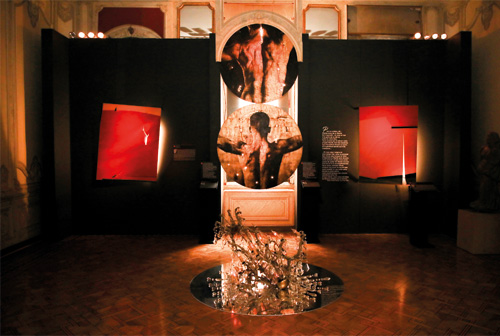|
|
|
Best Curated Exhibition
|
|
L’Art Blessé
L’Art Blessé
|
|
 |
|
Collective, Curated by Jean-Louis Mainguy. Exhibition committee: Christiane Audi, Nayla Chidiac, Joumana Hobeika, Marie Obegi, and Riad Obegi |
|
|
L’Art Blessé (Wounded Art) stands uniquely as a category resulting from a collective catastrophe, extending healing by producing a dialogue through art following the rupture of harmony. It showcases artworks that suffered from tear and breakage during the Port Explosion. This exhibition, in protest, challenges the blow by reconstructing art, moving forward, but with an intact memory. L’Art Blessé’s two creeds lay in the idea of trauma therapy, where facing one’s suffering head-on leads to healing, and Kintsugi, the Japanese art of repairing broken pottery by mending the areas of breakage with lacquer. Therefore, this exhibition is art therapy. The purpose is not just to heal the wound or hide it, but a rebirth of a stronger version of what was before. The process applies to both artists and artworks.
The exhibition features artworks that have been restored in a new way, reborn as new creations altogether. The original works had taken mild to severe hits following the Port Explosion. It inspires by using space, color, and light through a theatrical scenography, and musical arrangements from national composers. The pain is not hidden. It is sublimated through light, sound, and words. It is a feast for the senses, each work is accompanied by prose or poetry. Immersed in darkness thanks to black walls, soft lights are shed on each piece. The emotions are mixed and overwhelming but the message is hope.
There is a wide range of artists and styles, bringing works by modernists like Saliba Douaihy, Paul Guiragossian, and Italian Baroque painter Guido Reni, side by side to contemporary artists. One part of the exhibition showcases artwork inspired by the cataclysm itself. Another part focuses on artwork that has been damaged and left unrestored but contextualized, bearing the scars of their mutilation but without demeriting them. Some works were woven back in the literal sense, such a Tom Young painting which was stitched back together. Other works were left with their gaping, gleaming holes and uneven tears, installed in front of a backlight shining through the cuts, highlighting the lesions caused by flying debris. The ‘wounds’ are in full display where their aesthetic appeal is celebrated. They are also accepted and even embraced as part of what they represent.
L’Art Blessé debuted at Villa Audi (Beirut), where the building itself also had a great share of damage. The show has since travelled to Saida, and is on its way to Tripoli, where each city’s singular culture, space, and location plays a role by lending its own ‘wounds’ to the show. |
|
|
|
|
|
|
|
|
© 2021 by InfoPro sal. All Rights Reserved
|
|
|
|